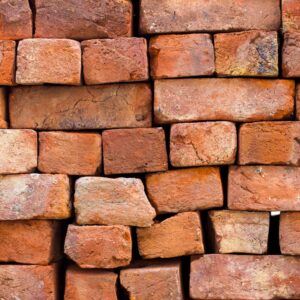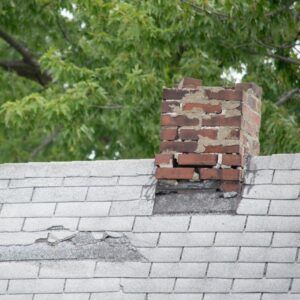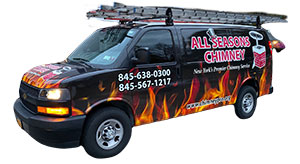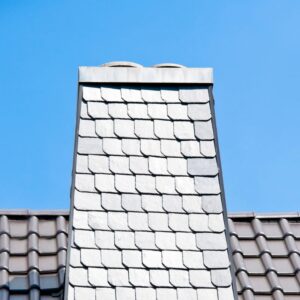Bricks have stood the test of time as a construction material. As a matter of fact, at the dawn of recorded history, ancient civilizations had already been using brick for thousands of years. Durable, versatile, and able to be made from materials that are readily available in most places around the globe, the popularity of brick should come as no surprise.
Not all bricks, however, are the same.
What Is Common Brick?
 The type of brick seen most commonly is aptly called “common brick,” although you may also hear it referred to as clay brick, building brick, or red brick. Common brick is classed according to the quality of the brick and uniformity of size and shape, with class one bricks being most suitable for permanent construction projects.
The type of brick seen most commonly is aptly called “common brick,” although you may also hear it referred to as clay brick, building brick, or red brick. Common brick is classed according to the quality of the brick and uniformity of size and shape, with class one bricks being most suitable for permanent construction projects.
Common brick is durable, versatile, and aesthetically pleasing for a variety of design uses. It has excellent compressive strength, which is what it can be used for load bearing walls as well as facades, patios, fences, and many other uses.
While common brick is prevalent, however, there are other types of bricks that can be extremely useful for specific applications. One of these helpful species of bricks is firebrick.
What Is Firebrick?
True to its moniker, firebrick can take heat. Common brick has a small to moderate degree of heat resistance. Firebrick, also known as refractory brick, can withstand much higher temperatures and tolerate substantially more thermal shock without degrading.
What gives firebrick its super powers? It boils down to its composition. Made of refractory clay, which contains alumina and silica, firebrick comes by its heat tolerant qualities naturally. These materials provide firebrick with excellent heat resistance – and therefore structural integrity – when exposed to extreme temperatures. It can also withstand rapid transitions from cooler to very hot temperatures, and has limited heat transfer, making it an excellent insulator.
Which Brick Is Best for My Fireplace & Chimney?
While common brick serves well in general construction, firebrick is desirable in environments that involve intense heat, such as kilns, furnaces, and – you guessed it – fireplaces. That said, often the two types of brick will be used in tandem when it comes to these heating systems.
Take, for instance, your average home fireplace. Most likely, you’ll find that the firebox – the component of the fireplace system in which the fire is actually made – will be made from firebrick. The rest of the chimney will likely be composed of cement block or common brick, while flue tiles lining the exhaust flue.
Utilizing different types of bricks according to their strengths maximizes a property owner’s resources and the function of the construction project.
Red brick is relatively lighter in weight and more porous than firebrick. Firebrick is more dense (and therefore heavier for its size), has a smoother texture, and is more costly than common brick. Another difference is in color. While there are variances in hue and shade, common brick typically comes in warm, earthy colors. If you see firebrick in these colors, it’s been dyed – while it’s naturally white, pigment can be added to the slurry before firing to color it to fit a desired design.
Because firebrick can take prolonged exposure to intense heat, it makes sense to make use of it in areas in direct contact with flame. Placing it there also protects the surrounding structure. Where common brick may crack or transfer heat, firebrick will contain and insulate without breaking down, making it a worthy investment.
Common brick, while not suitable for this kind of heat exposure, can still find use in the outer layers of heat-related appliances, provide structural support, and act as a decorative facing material. Its lighter weight and lower cost, along with its durability, makes it a great supporting character in relation to high heat specialized structures, and in general masonry work where high temperature resistance isn’t required.
Schedule Masonry Repairs & Maintenance With Us
 While brick is a long-lasting and hard-wearing material, it does require routine maintenance to ensure its longevity and functionality. Mortar can deteriorate over time, and the elements can erode brick or cause cracking and spalling due to exposure to the elements. Left unchecked, these conditions can worsen sooner than later. If initial installation is inadequate, this can exacerbate and accelerate problems.
While brick is a long-lasting and hard-wearing material, it does require routine maintenance to ensure its longevity and functionality. Mortar can deteriorate over time, and the elements can erode brick or cause cracking and spalling due to exposure to the elements. Left unchecked, these conditions can worsen sooner than later. If initial installation is inadequate, this can exacerbate and accelerate problems.
As certified chimney technicians, we’ve seen masonry in all stages of disrepair and can identify – and help address – issues to protect and repair masonry.
Call Our Certified Sweeps Today
If you’re considering an addition to your property that involves masonry, be sure you know your brick types and how to use them to your advantage, especially if your addition will involve extreme heat. Looking to have a fireplace installed, upgraded, or repaired? Rely on a chimney professional with solid industry certifications and experience when undertaking this type of project. When done excellently, it can add years of enjoyment and value to your living space!
The Hudson Valley has been trusting us for their chimney care for over 25 years, and our satisfied customers will attest to our concern for the safety, investment, and comfort of your home. Call or reach out online today to get started.


 Rain & Moisture Protection:
Rain & Moisture Protection:  Weatherproofing: Like the chimney cap and chimney crown, the chase cover acts as a defense against rain, snow, and other moisture-heavy weather. It boxes in the chimney and allows smoke out, while keeping water from getting in.
Weatherproofing: Like the chimney cap and chimney crown, the chase cover acts as a defense against rain, snow, and other moisture-heavy weather. It boxes in the chimney and allows smoke out, while keeping water from getting in.